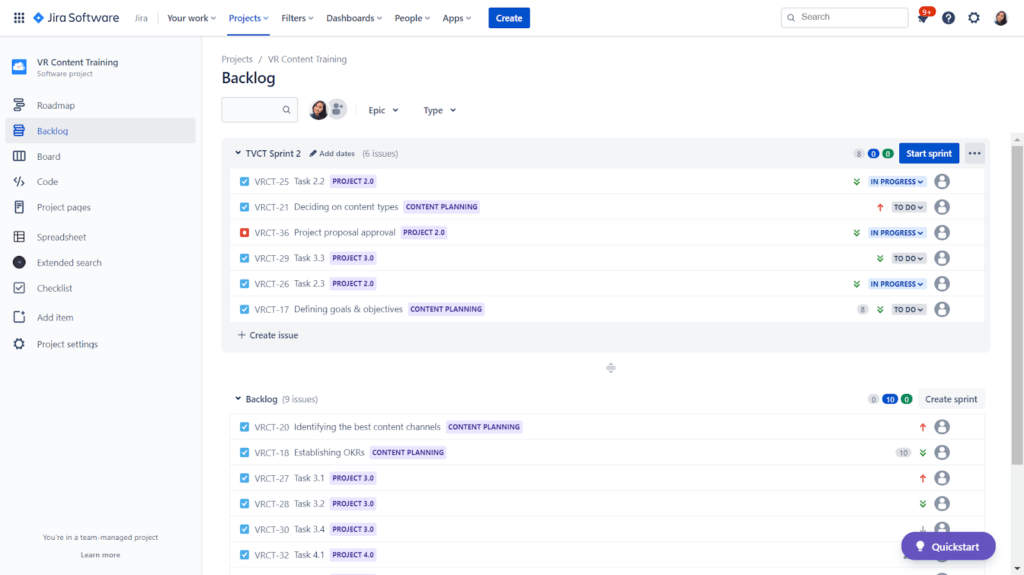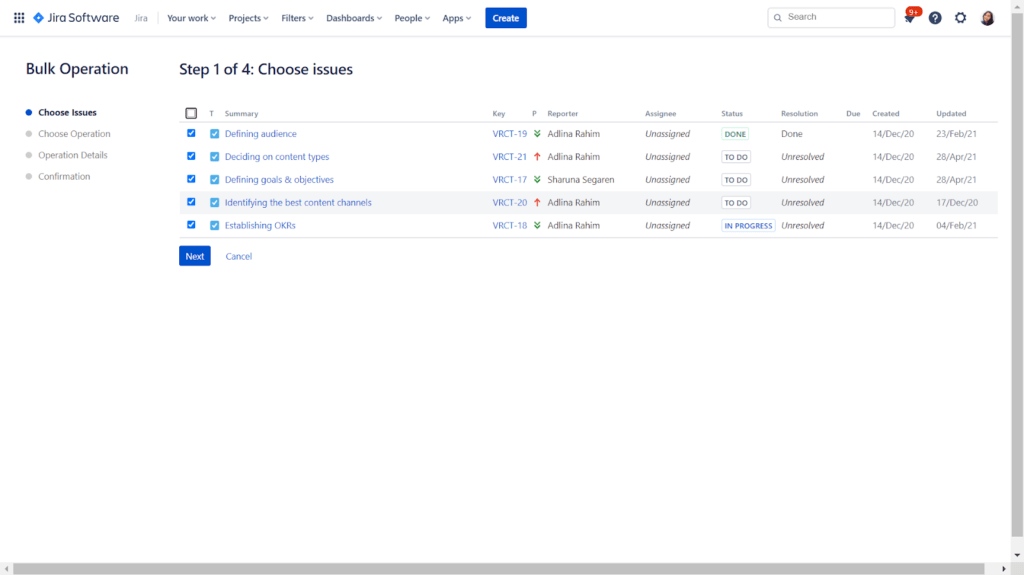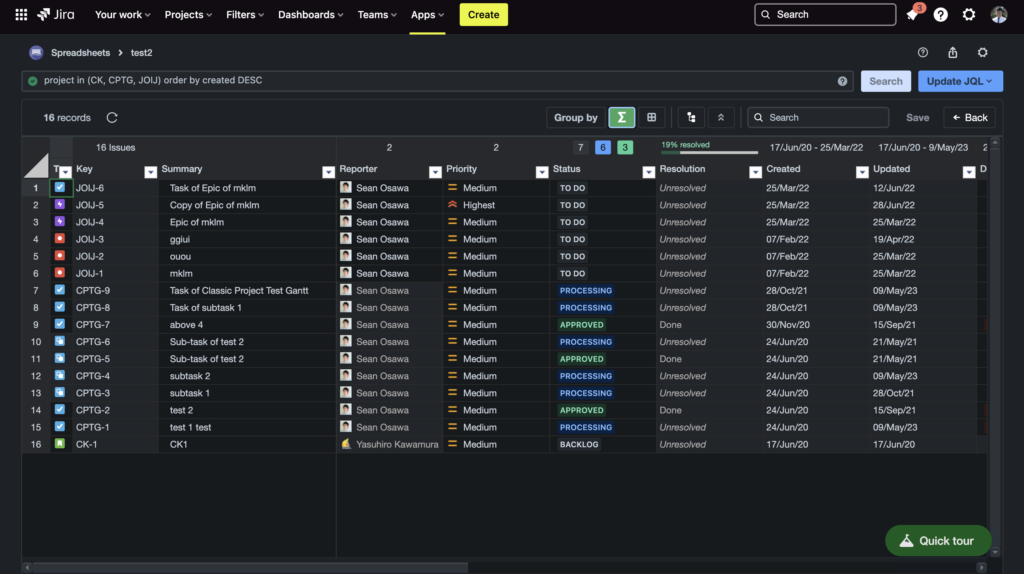Scrum refinement or backlog grooming, is a key process in agile project management, but a lot of agile teams are still struggling to get it right.
If you’re managing your backlogs in Jira, the good news is that you won’t have to start from scratch. You can groom all your backlogs (product/project and sprint) in one place!
But the thing is, without the right practices in place (e.g., adding context and due dates to issues), you could be facing challenges and blockers that can easily pile up and cause your projects or products to fail.
So, if you do groom your backlog but find yourself asking questions like, “Why is sprint planning taking too long?” “Why are my teams short on sprint deliverables?” “Why is my team’s performance dropping?” then you are not grooming your backlog effectively and efficiently.
So, what kind of mistakes could you be making? What are the best practices that you could incorporate? This article has all the answers.
Continue reading to learn about the Jira backlog grooming practices you should avoid and the effective ones that you should start doing.
Common Jira Backlog Refinement Mistakes to Avoid
1: Backlog Is Treated Like a Wish List
The backlog isn’t a dream vault. You shouldn’t log an issue whenever you have an idea, a new requirement, or a request from a stakeholder. The truth is, you will be more likely to forget about them than to attend to them.
After a while, the list builds up and crowds the backlog. You will lose track of what’s important and end up jeopardizing the overall business roadmap – which brings us to the next problem…
2: Sprint Objectives Are Not Aligned with Business Goals
This becomes a problem when you can’t say “No.” Stakeholders can be pushy with new ideas and requests. Although you may feel obliged to satisfy them, it’s important to learn to say “no” when their ideas and requests:
- Don’t contribute to the product/project roadmap
- Don’t add value to the product/project lifecycle
- Don’t increase adaptability to marketplace conditions
If you can’t deny them and explain the reasons why, your backlog will be filled with issues that cause you to deviate from the roadmap and hinder you from achieving sprint objectives.
3: Backlog Grooming Is Not Regulated
Grooming is a pre-planning process; you do it before you plan your sprint. It helps you decide what issues to prioritize and stage for the upcoming sprint. So, appropriately, about five to ten percent of a sprint should go into backlog grooming.
This five to ten percent is actually incremental in helping you shorten your sprint planning. Skipping this would mean spending long hours pulling issues from the backlog into your sprint backlog. This doesn’t include issue prioritization, sorting out new requirements, adding relevant context, and clearing up irrelevant issues from your backlog – the key processes of backlog refinement.
4: Issues Are Not Refined with Relevant Context
Most of the time, when you create new issues, they contain minimal context. But grooming sessions are when you refine these Jira issues with details like task description, estimates, due dates, assignee, priority, etc. These details help give clarity to your issues and will serve as a key reference for your teams when they need to start working.
Effective Jira Backlog Refinement Best Practices
The best thing about Jira is that it’s ideally suited to accommodate the best practices of agile project management. So all you have to do is implement the best practices below:
1: Align Upcoming Tasks with Your Roadmap
The roadmap indicates how your product or project is expected to grow over time. So, what’s the point of having a product or project roadmap if you’re not going to use it as your guide? Your backlog should mainly consist of issues that can align your sprint objectives with the roadmap.
Of course, new requirements or blockers might change your course of action. But as long as solving them adds value and doesn’t deviate you and your team from the roadmap, then it won’t be a problem.
The roadmap also provides context for you, your team, and all stakeholders; enables effective collaboration; and helps everyone stay coordinated. So, it’s key that your roadmap is top-of-mind.
2: Prioritize Issues Accurately
When you prioritize your issues accurately, you help define what your upcoming sprints will look like. This is key because:
- Prioritized issues help you define the sprint’s objectives clearly.
- You can set realistic expectations for upcoming deliverables.
- It helps coordinate stakeholders with upcoming deliverables.
In Jira, you can set dependencies between issues. Utilizing this feature will help you better understand the urgency between issues and foresee risks if your team can’t meet the deliverables on time.
To discover more grooming tips and backlog management best practices, check out The Ultimate Guide to Jira Backlog Grooming.
3: Review Prioritized Issues with the Team
Once you’ve prioritized your issues accurately and escalated important ones to the sprint backlog, you need to review them once again with your team. Although this is not always necessary, it is actually a good practice to have the input and feedback of your team members to improve prioritization in upcoming sessions.
Here are some benefits of including your team members during grooming:
- Your team can understand their work better.
- Your team can plan their upcoming sprint more successfully.
- You can help distribute work more effectively.
4: Use Tools that Can Accelerate Backlog Grooming
Jira has recently enabled users to groom multiple issues at once. But the process isn’t smooth and is painfully inefficient.
- You need to go through multiple screens to bulk-edit issues.
- You can only bulk-edit child issues to an epic.
- There’s a waiting time to complete a bulk-edit action.
For a more efficient backlog grooming experience, you can leverage an app like Excel-like Bulk Issue Editor for Jira.
The app helps you groom as many product or project backlogs as you want without consuming too much time. This is especially valuable when you have tons of backlog items to groom and numerous tasks to break down. The app allows you to:
- Bulk edit up to 10,000 issues on one screen.
- Visualize a hierarchical breakdown of your issues.
- Export and import your Excel (or CVS) data for cross-platform collaboration.
- Present prioritized issues to team members clearly during reviews.
- Enable team leaders to set up and groom their own backlogs for better in-team workload management.
Its Excel-like interface and functions (copy and paste) make editing so much easier. Best part? Apply changes immediately, as there’s no waiting time!
5: Regulate Backlog Grooming Meetings
Backlog grooming should be done before sprint planning because it basically helps you groom your product/project backlog into a sprint backlog.
Since it’s an important process and shouldn’t be skipped, it helps to schedule the meeting on a regular cadence. For this session, prepare a to-do checklist so that you and your teams won’t miss out on anything important.
Grooming Shouldn’t Feel Like a Burden
Jira backlog grooming is an underrated yet instrumental process for all Jira teams. When done right, backlog refinement will not only help you manage your projects better, but it can also stop them from failing.
Incorporate the best practices above, and your scrum refinement will never feel like a burden. After all, it should only take up five to ten percent of your sprint effort to complete.
Learn more about backlog grooming by reading “The Ultimate Guide to Jira Backlog Grooming.”





